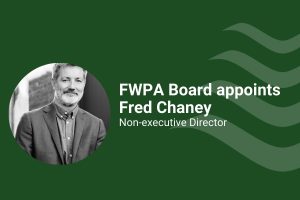FWPA’s ForestLearning initiative has continued to throw its support behind new and continuing programs, designed to educate tomorrow’s consumers about the benefits of forestry.
At the same time, the program aims to inspire students to consider a career in forestry, while demystifying the pathways into the industry.
Australian schools and students will again be given opportunities to see and learn more about the sustainable forest and wood products industry, thanks to a new series of Forester Time live education webinars, set to take place on and around National Ag Day on Friday 20 November.
Headed by the Primary Industries Education Foundation, and coordinated and hosted by ForestLearning, the Forester Time events will showcase foresters on-site, around Australia. During these sessions, foresters will share details of the cycle of forests, renewable wood products, and the use of drones and technology.
The latest round of Forester Time events follows a successful series of similar webinars earlier in the year, and will continue to connect more teachers and students with forest and wood processing professionals.
The initiative allows students to learn more about the daily work of foresters, sustainable forest management and career pathways.
Considering the varying and ongoing restrictions imposed by COVID-19, these webinars will continue to play an important role in connecting more teachers and students with forest and wood processing professionals.
“Like all ForestLearning resources, the Forester Time series is driven by the idea that engaging students early will help them establish informed opinions about the forestry industry,” said Beth Welden, ForestLearning Manager.
“We hope to provide meaningful educational experiences that will give today’s young people an appreciation of the sustainable and renewable nature of our forests.
“As the decision makers, voters and consumers of the future, it is important that today’s young people have an affiliation with wood and are fully aware of the benefits,” said Welden.
While speakers, topics and timings for the next round of Forester Time webinars are still being finalised, any interested teachers should contact Info@ForestLearning.edu.au to register their interest.
Preparing the Green Triangle’s future forestry workforce
The forest and wood products industry underpins thousands of jobs in South Australia’s Green Triangle region, and opportunities for careers in the sector are many and varied.
“The region is unique in that it contains the breadth of the entire forestry value chain – from seedling cultivation right through to final fibre processing,” explained Welden.
“There is also a depth to this value chain that includes world leading, international corporations, through to start-ups and micro businesses. All are looking for innovative solutions and a skilled workforce to ensure a long-term future.”
The Ultimate Renewable Forest Learning Pathway Program is a partnership approach that provides unique opportunities for students to develop skills which support future pathways into the industry.
The program, put together and led by OneFortyOne, and launched at the Mt Gambier Forest Industry Hub, incorporates a range of classroom and field-based experiences. It is hoped these will soon become formally recognised as an official Flexible Industry Pathway.
“ForestLearning is a proud supporter of this initiative, and has provided input and advice throughout the planning phase, including how ForestLearning resources such as our popular ForestVR can be incorporated,” said Welden.
“ForestLearning has also promoted the program and resources through its own teacher networks and social media channels, including face-to-face visits to local Mount Gambier high schools.”
Participating students undertake training around several competencies — from forest growing and management, to harvesting and haulage, to sawmilling and processing — that have been nominated by industry to ensure relevance and improve access to pragmatic, targeted industry pathways.
As part of this work, OneFortyOne appointed Linda Cotterill to a new role as Pioneer, in recognition of her experience and esteem within the timber industry and the Green Triangle community.
“The program was created to promote forestry and all that entails, as a career option to youth in the Green Triangle region,” Cotterill explained.
“The forestry industry has struggled to attract a diverse range of people, particularly youth. Despite being a large economic contributor to our region, up until now young people have been unaware of the employment and training options that could help them stay and thrive in the region.
“The program incorporates activities for primary school children upwards. Primary school activities are focused on celebrating days recognised nationally and internationally, such as National Tree Day, and other forest and biodiversity days. For secondary school students, the focus is on working with a broad range of industry stakeholders,” said Cotterill.
Years 11 and 12 students choose a focus area and have the option of completing an investigation and / or research project. All study contributes to South Australian Certificate of Education credits, and on successful completion students attain a Certificate III in a focus area of their choosing.
“Our first-year industry intake comprises 11 students aged between 15 and 17 years. They come from St Martins Lutheran College, Mount Gambier High School, Grant High School and Tenison Woods College,” said Cotterill.
“Aside from providing students with real-world skills and career opportunities, the program is helping to strengthen community, school and industry linkages.”
Despite a challenging start due to COVID-19 restrictions, the students have completed classroom components and undergone two days of industry overview and orientation. A week-long industry placement and first aid training are scheduled for later this year.
The students will complete placements with industry hosts, to ensure thorough exposure to all facets of the industry, including softwood and hardwood plantations, and various processing facilities.
“These placements have the potential to lead to cadetship and scholarship opportunities, while providing valuable insights into the strategies that will help us retain young people once they’ve entered the workforce,” Cotterill concluded.
The model has future potential to be rolled out in different geographical regions across Australia.



